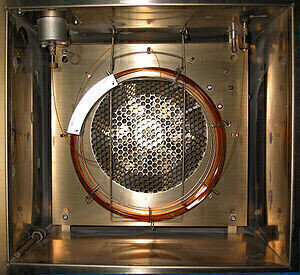GC, MDGC
5 Ways to Extend a Gas Chromatography Column’s Life
Aug 01 2014
The gas chromatography (GC) column is perhaps the most important component in the analysis instrument. Various approaches can be used to extend a column’s life to ensure that it always operates at optimum efficiency thus allowing the column to perform the function of separating components efficiently and precisely.
1) Correct Installation
Extending a column’s life starts with correct installation of it. New columns do not usually have a specific directional flow. Therefore, it is good practice to decide which end of the column should be the inlet end.
Some contaminants can cause a problem known as column bleed. One of the simplest ways to deal with this is to trim a short section from the inlet of the column. By marking the inlet, the column is always trimmed at the same end. It can be difficult to fix a problem if both ends of the column have been used as the inlet.
When trimming a column, either during installation or to cure a future problem, always use appropriate tools to ensure that cuts are neat and straight, with no jagged edges.
2) Condition the Column
It is important to remove oxygen from new and stored columns. If a column is heated with oxygen within it damage can be caused to the stationary phase, reducing the lifetime of the column.
It is recommended that a gas purge be carried out when a column is inserted into the GC before it is heated. Normally the carrier gas is used to remove oxygen from the column. Subsequently, columns can be heated to their maximum operating temperature and held at that temperature until a stable baseline is achieved.
3) Sample Preparation
Don’t allow the system to become contaminated in the first place!
Many products have been specifically manufactured to clean up samples before they are injected into the GC. Sample clean up should isolate the components to be analysed from potential contaminating chemicals. For example, if the sample matrix contains undissolved solids, these should be filtered out before the sample is injected into the GC column.
4) Column Guards
A column guard prevents non-volatile residues from gaining access to the column. The column guard is typically a 5-10 m length of deactivated tubing of the same internal diameter as the main analytical column. The column guard is usually joined to the analytical column with a push-fit glass connector.
If the chromatography results deteriorate in analytical performance, the column guard can be trimmed to facilitate removal of any contamination at the inlet, thus preventing the need to shorten the main column.
A full discussion of the benefits of column guards can be found in the article: Protecting your GC Column.
5) Bake Out
One of the simplest methods to extend a column’s life is to build a ‘bake out’ period into GC methodology. A bake out is a short high temperature step at the end of a GC run, which helps to remove high boiling contaminants from the column.
Image Source
Digital Edition
Chromatography Today - Buyers' Guide 2022
October 2023
In This Edition Modern & Practical Applications - Accelerating ADC Development with Mass Spectrometry - Implementing High-Resolution Ion Mobility into Peptide Mapping Workflows Chromatogr...
View all digital editions
Events
Apr 23 2024 Kintex, South Korea
Apr 23 2024 Seoul, South Korea
Apr 28 2024 Montreal, Quebec, Canada
May 05 2024 Seville, Spain
May 15 2024 Birmingham, UK














